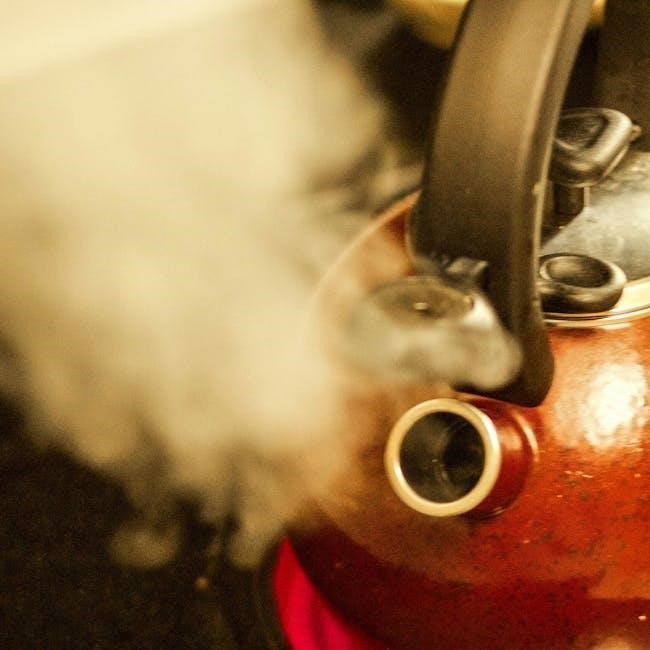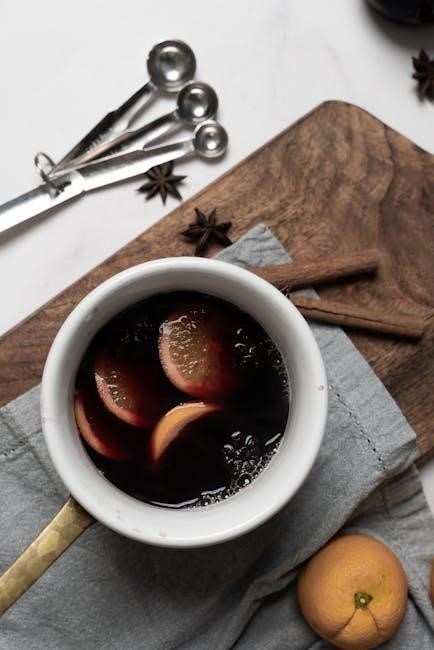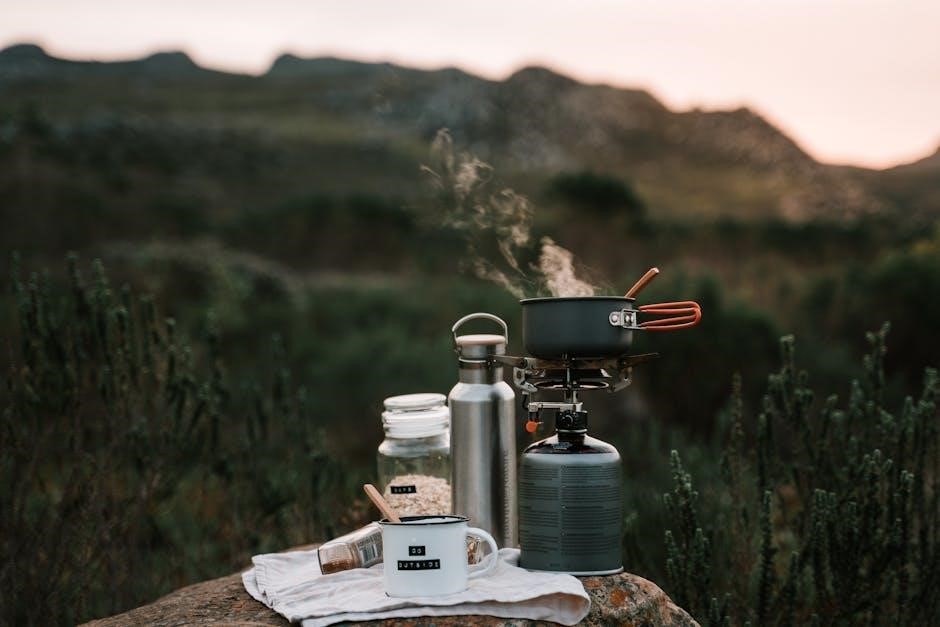Welcome to our guide on boiling mouthguard instructions! This process ensures a secure, comfortable fit for maximum protection during sports or dental use. Follow these steps carefully to shape your mouthguard perfectly for optimal safety and comfort.
What is a Boil-and-Bite Mouthguard?
A boil-and-bite mouthguard is a type of mouthguard made from thermoplastic material that softens when exposed to boiling water, allowing it to be molded to fit an individual’s teeth and mouth. The process involves boiling the mouthguard to make it pliable, then biting down on it to create a custom impression. This method provides a snug and personalized fit, offering better protection than stock mouthguards. It is commonly used in sports and dental applications for its balance of affordability and effectiveness. The boil-and-bite design is less expensive than custom-fitted mouthguards but offers superior comfort and protection compared to generic options.
Benefits of Using a Boil-and-Bite Mouthguard
Using a boil-and-bite mouthguard offers several advantages, including a customizable fit that provides superior protection and comfort. The thermoplastic material molds to your teeth and gums, ensuring a secure fit that reduces the risk of dental injuries. It is more affordable than custom-fitted mouthguards while offering better protection and comfort than stock options. The boil-and-bite process is simple and can be done at home, making it a convenient choice for athletes and individuals needing dental protection. Additionally, it allows for easy adjustments if the fit isn’t perfect, ensuring optimal performance and comfort during use.

Materials Needed for Boiling a Mouthguard
Gather essential items: a pot or saucepan, slotted spoon, mirror, bowl of cold water, and a clock or timer for precise boiling and cooling times.
Pot or Saucepan
A small to medium-sized pot or saucepan is necessary to boil water for softening the mouthguard. Ensure it can hold enough water to fully submerge the mouthguard, typically 3-4 inches deep. Avoid using oversized pots to save water and energy. The pot should have a lid to help the water reach a rolling boil quickly. Handle the pot with care, as it will be used to heat water to high temperatures. Always place the pot on a stable stovetop and monitor it to prevent overheating or spills. This step is crucial for the fitting process.
Slotted Spoon
A slotted spoon is essential for safely handling the mouthguard during the boiling and fitting process. It allows you to submerge and remove the mouthguard from hot water without direct contact, preventing burns. The slots in the spoon enable excess water to drain, making it easier to manage the softened mouthguard. Use a spoon with a long handle for better control and to keep your hands away from the hot water. Ensure the spoon is sturdy enough to hold the mouthguard securely. This tool is indispensable for careful and precise handling of the mouthguard during fitting.
Mirror
A mirror is a helpful tool during the fitting process of a boil-and-bite mouthguard. It allows you to see the positioning of the mouthguard inside your mouth, ensuring proper alignment with your teeth and gums. By using a mirror, you can accurately assess whether the mouthguard is evenly seated and covers all necessary areas. This visibility helps achieve a more precise fit, enhancing both comfort and protection. While not always required, a mirror can be particularly useful for first-time users or those who want to ensure the best possible alignment of their mouthguard.
Bowl of Cold Water
A bowl of cold water is essential for the cooling and setting process after boiling your mouthguard. Once the mouthguard has been submerged in boiling water and softened, it must be immediately placed into the cold water to halt the softening process. This step is critical, as it allows the mouthguard to retain its shape after you bite down. The sudden change in temperature helps the thermoplastic material set firmly around your teeth and gums, ensuring a secure and personalized fit. Proper cooling is vital for maintaining the structural integrity and protective qualities of the mouthguard.
Clock or Timer
A clock or timer is crucial for ensuring the mouthguard is boiled and cooled for the correct duration. Most boil-and-bite mouthguards require submersion in boiling water for 30 to 60 seconds, followed by precise cooling times. Using a timer helps you avoid overheating or under-cooling the mouthguard, both of which can affect its fit and performance. Proper timing ensures the thermoplastic material softens adequately without becoming too brittle or misshapen. Accurate timing is essential for achieving a comfortable, secure fit that provides maximum protection during sports or dental use.

Preparing the Mouthguard
Bring water to a boil, then let it cool slightly to avoid overheating the mouthguard. Submerge the mouthguard fully to soften the thermoplastic for a perfect fit.
Step 1: Boil Water
Fill a pot with 3-4 inches of water and bring it to a rolling boil on the stove or in the microwave. Ensure the water reaches a temperature sufficient to soften the thermoplastic material without overheating it. Avoid using excessively hot water, as it may damage the mouthguard. Once boiling, remove the pot from the heat source or turn off the microwave. Let the water stand for about 30 seconds to cool slightly before proceeding. This step is crucial for softening the mouthguard material to achieve a proper fit. Always follow the manufacturer’s guidelines for specific temperature requirements.
Step 2: Let Water Cool Briefly

After boiling, remove the pot from the heat source and let the water cool for 30 seconds to 1 minute. This brief cooling period ensures the water is hot enough to soften the mouthguard without causing burns or damage. Stir the water gently to distribute heat evenly. If using a microwave, carefully remove the water and allow it to stand for the same duration. Proper cooling prevents overheating the mouthguard, which can lead to a loss of shape or structural integrity. Once cooled slightly, the water will be ready for submerging the mouthguard in the next step.
Step 3: Submerge the Mouthguard
Carefully place the mouthguard into the slightly cooled boiling water, ensuring it is fully submerged. Use a slotted spoon to gently hold it underwater if necessary. Let it sit for 20-30 seconds, or as specified in the manufacturer’s instructions, until the material softens. Avoid leaving it in for too long, as this could cause the mouthguard to become misshapen. Once the mouthguard feels pliable but not overly soft, it is ready to be removed and fitted. Proper submersion ensures even softening of the thermoplastic material, allowing for a precise mold to your teeth and gums in the next step.

The Fitting Process
The fitting process involves shaping the softened mouthguard to your teeth and gums for a secure fit. Follow the steps carefully to ensure comfort and protection during use.
Step 4: Remove and Cool Briefly
After boiling, carefully remove the mouthguard with a slotted spoon and let it cool for about 10-15 seconds. This brief cooling helps prevent burns when shaping it in your mouth. Proper handling ensures the mouthguard retains its pliable state for an accurate fit.
Step 5: Position the Mouthguard
Gently place the mouthguard into your mouth, aligning it with your upper teeth. Ensure the mouthguard is centered and covers both the upper and lower teeth evenly. Avoid forcing it into position, as this could cause misalignment. Proper placement is crucial for both protection and comfort. Once positioned, hold it firmly in place with your fingers to maintain stability before proceeding to bite down and shape it further. This step ensures the mouthguard adapts to your dental structure effectively. Make sure the fit feels natural and secure before moving on to the next step.
Step 6: Bite Down and Shape
Firmly bite down on the mouthguard, applying even pressure across all teeth. Hold this position for 20-30 seconds to allow the thermoplastic material to mold to your dental structure. Ensure the fit feels snug and natural, adapting to the contours of your mouth. Avoid biting too hard, as this could distort the shape. Once done, release and check the fit. If necessary, repeat the process for better alignment. Proper shaping ensures optimal protection and comfort during use. This step is crucial for achieving a customized fit tailored to your specific dental needs.
Step 7: Check the Fit
After shaping, evaluate the mouthguard’s fit by ensuring it stays securely in place without shifting. It should cover all necessary teeth and gums for optimal protection. Check for comfort and proper alignment, making sure it doesn’t impede breathing or speech. If adjustments are needed, repeat the boiling and shaping process. Once satisfied, immerse the mouthguard in cold water to set the shape permanently. A proper fit ensures maximum protection during activities. If the fit feels loose or uneven, reheat and reshape as needed. Proper fit verification is crucial for both safety and performance.
Step 8: Cool the Mouthguard
Once the mouthguard is properly shaped, immediately submerge it in a bowl of cold water to cool and set the shape. This step is crucial as it hardens the plastic, ensuring the fit remains stable. Use ice water or run cold tap water over the mouthguard to expedite the cooling process. Allow it to cool completely before removing it from the water. Proper cooling ensures the mouthguard retains its customized shape and provides long-lasting protection. Avoid skipping this step, as it finalizes the fit and prevents the mouthguard from losing its form over time.

Common Mistakes to Avoid
Avoid overheating the mouthguard, as it can deform irreparably. Ensure proper cooling time before fitting to maintain shape and comfort. Never skip manufacturer guidelines for best results.
Not Following Manufacturer Instructions
Failing to follow manufacturer guidelines is a common mistake that can lead to improper fit and reduced protection. Each mouthguard model has specific boiling times and cooling procedures. Ignoring these instructions may result in a mouthguard that is too soft or too hard, causing discomfort and inadequate protection. Always read and adhere to the provided instructions to ensure optimal results. Deviating from recommended steps can compromise both safety and comfort, making the mouthguard less effective in preventing injuries. Proper adherence ensures a secure, customized fit tailored to your dental structure. This step is crucial for maximizing protection during sports or dental use.
Overheating the Mouthguard
Overheating the mouthguard is a common mistake that can damage its structure and fit. Exceeding the recommended boiling time or temperature can cause the thermoplastic material to become too soft or brittle. This may result in a mouthguard that shrinks, distorts, or loses its shape, leading to discomfort and reduced protection. Always monitor the boiling time and temperature carefully, as specified in the manufacturer’s guidelines. If the mouthguard becomes overly soft, it may not retain its shape when cooled, requiring re-molding or replacement. Avoid overheating to ensure the mouthguard remains durable and provides proper protection during use.
Improper Seating of the Mouthguard
Improper seating of the mouthguard can lead to a poor fit and reduced protection. After boiling, if the mouthguard is not positioned correctly in the mouth, it may not conform properly to the teeth and gums. This can result in discomfort, difficulty speaking, and inadequate coverage. Ensure the mouthguard is centered and covers all necessary areas, including the upper teeth and gums. Proper alignment is crucial for both comfort and effectiveness. If the mouthguard feels loose or misaligned, reheat and reshape it following the manufacturer’s instructions for a more secure fit. Correct seating ensures optimal protection during sports activities.
Insufficient Cooling Time
Insufficient cooling time is a common mistake when fitting a boil-and-bite mouthguard. After boiling, the mouthguard must cool slightly before biting down. If it’s too hot, it can cause discomfort or burns. Allow the mouthguard to cool for about 10-15 seconds in the air or a few seconds in cold water. This ensures it’s warm but not scalding. Proper cooling time helps maintain the structure and fit of the mouthguard, preventing it from becoming too soft or misshapen. Always prioritize cooling to ensure a safe and effective fitting process for optimal protection and comfort during use.

Over-Tightening the Fit
Over-tightening the fit is a common error when molding a boil-and-bite mouthguard. Biting down too hard can cause the mouthguard to become overly compressed, leading to discomfort and reduced protection. A mouthguard that is too tight may restrict breathing or speaking and can cause jaw strain. Instead, apply gentle, steady pressure to shape the mouthguard around your teeth and gums. Ensure the fit is snug but not overly tight for optimal comfort and protection. Avoid excessive force, as this can deform the mouthguard and compromise its effectiveness during sports or dental use.

Aftercare and Maintenance
Properly clean your mouthguard with mild soap and water after each use. Store it in a protective case to avoid deformation and contamination. Replace it as needed.
Cleaning the Mouthguard
To maintain hygiene and longevity, clean your mouthguard regularly. Use mild soap and warm water, gently scrubbing with a soft toothbrush. Avoid harsh chemicals or hot water, as they may deform the material. For deeper cleaning, soak the mouthguard in a mixture of mouthwash and water for 10-15 minutes. Rinse thoroughly and allow it to air dry. Regular cleaning prevents bacterial buildup and ensures freshness. Avoid using abrasive materials that could scratch the surface. Proper cleaning helps maintain the mouthguard’s fit and protective qualities. Always store it in a dry, protective case when not in use.
Storing the Mouthguard
Proper storage is essential to maintain the shape and hygiene of your mouthguard. Always store it in a hard, ventilated case to prevent deformation and bacterial growth. Keep it away from direct sunlight, extreme temperatures, and moisture. Avoid leaving the mouthguard in a wet environment or rolled up, as this can cause warping or damage. Clean the mouthguard thoroughly before storage and ensure it is completely dry. Store it in a protective case to prevent accidental bending or compression. Regularly inspect the case for cleanliness and replace it if damaged. Proper storage ensures your mouthguard remains effective and comfortable for extended use.

Regular Inspection
Regular inspection of your mouthguard ensures it remains effective and safe to use. Check for signs of wear, such as thinning, cracks, or deformation, after each use. If damaged, replace it immediately to maintain optimal protection. Inspect the fit periodically, as a loose or ill-fitting mouthguard can reduce its protective qualities. For children, check the fit more frequently, as their mouths grow rapidly. Clean the mouthguard during inspections to prevent bacterial buildup. If you notice any issues, consult a dental professional for advice. Regular inspections help extend the lifespan of your mouthguard and ensure it continues to provide reliable protection during sports or dental use.

Safety Considerations
Ensure the mouthguard is not too hot or cold before fitting. Avoid overheating, as it can damage the material. Always follow manufacturer guidelines to prevent harm and ensure proper fit.
Special Considerations for Braces
When fitting a boil-and-bite mouthguard with braces, avoid sucking in air, as this can misshape the mouthguard. Instead, gently press it into place. Ensure the water isn’t overly hot to prevent excessive softening. Allow the mouthguard to cool slightly before handling to avoid burns. For individuals with braces, shorter boiling times (around 10 seconds) are recommended to maintain proper fit and protection. Always follow the manufacturer’s guidelines for specific instructions tailored to braces. If unsure, consult a dental professional for assistance. Proper fitting ensures comfort and effective protection for both teeth and braces during sports or dental use.
Fitting for Children
Fitting a boil-and-bite mouthguard for children requires extra care to ensure comfort and safety. Start by boiling the mouthguard as instructed, then let it cool slightly to avoid burns. Supervise the child during the fitting process to guide proper placement. Encourage them to bite down gently but firmly to shape the mouthguard around their teeth and gums. Ensure the mouthguard does not cover the back molars excessively, as this can cause discomfort. Allow the mouthguard to cool completely before checking the fit. Proper fitting ensures the child’s mouthguard provides adequate protection while remaining comfortable for speech and breathing.
Avoiding Improper Use
To avoid improper use of a boil-and-bite mouthguard, never share it, as this can spread germs and misshape the guard. Avoid chewing or biting down excessively, which can weaken the material. Do not leave the mouthguard in extreme temperatures, as this may alter its fit. Clean the mouthguard regularly with mild soap and rinse thoroughly. Store it in a protective case when not in use to prevent deformation. Ensure the mouthguard is not worn with loose or damaged areas, as this can reduce protection. Always follow the manufacturer’s guidelines for boiling and fitting to maintain its effectiveness and longevity.
Boiling mouthguards offers a cost-effective, custom fit solution. For best results, follow manufacturer instructions and avoid overheating. Regular maintenance ensures longevity and optimal protection. Consider consulting a dental professional for personalized advice on the best mouthguard for your needs. Always prioritize proper fit and care to maximize safety and comfort during sports or dental use. By adhering to these guidelines, you can achieve a secure and comfortable fit tailored to your specific requirements.
Final Thoughts on Boiling Mouthguards
Boiling mouthguards provide a cost-effective solution for achieving a custom fit. While they are not as superior as custom-made options, they are a significant improvement over stock mouthguards. Proper fit is crucial for both protection and comfort. Always follow manufacturer instructions to avoid common mistakes like overheating or improper shaping. For those with braces or specific dental needs, consulting a professional is recommended. Regular maintenance and inspection ensure longevity. While boil-and-bite mouthguards are convenient, they may not suit everyone, especially those requiring advanced protection. By adhering to guidelines, you can maximize their effectiveness and safety for your dental or athletic needs.
Recommended Products
For a reliable boil-and-bite mouthguard, consider brands like Shock Doctor and OPRO, known for their high-quality materials and excellent fit. The Shock Doctor Ultra Braces Mouthguard is ideal for those with orthodontic braces, offering superior protection and comfort. OPRO Power-Fit is another top choice, praised for its durability and ease of molding. These products are widely recommended by athletes and dental professionals for their effectiveness in absorbing impacts and providing a secure fit. When choosing, ensure the product aligns with your specific needs, such as sports type or dental requirements. Always consult reviews and manufacturer guidelines for the best experience.
Consulting a Dental Professional
Consulting a dental professional is crucial for ensuring your mouthguard provides optimal protection and comfort. They can offer personalized advice tailored to your dental needs, especially if you have braces or unique oral conditions. A dentist can also assess the fit of your boil-and-bite mouthguard to ensure it meets safety standards. For children or individuals with complex dental situations, professional guidance is highly recommended to prevent improper fitting. Additionally, a dental professional can recommend the best products and techniques, ensuring your mouthguard lasts longer and performs effectively during sports or other high-impact activities. Their expertise guarantees a secure and comfortable fit.